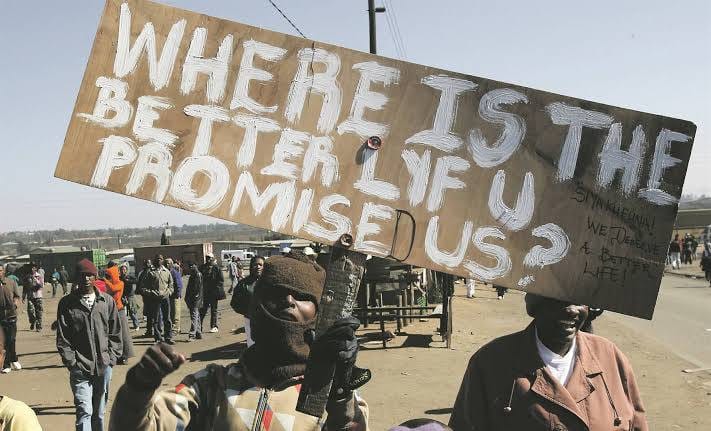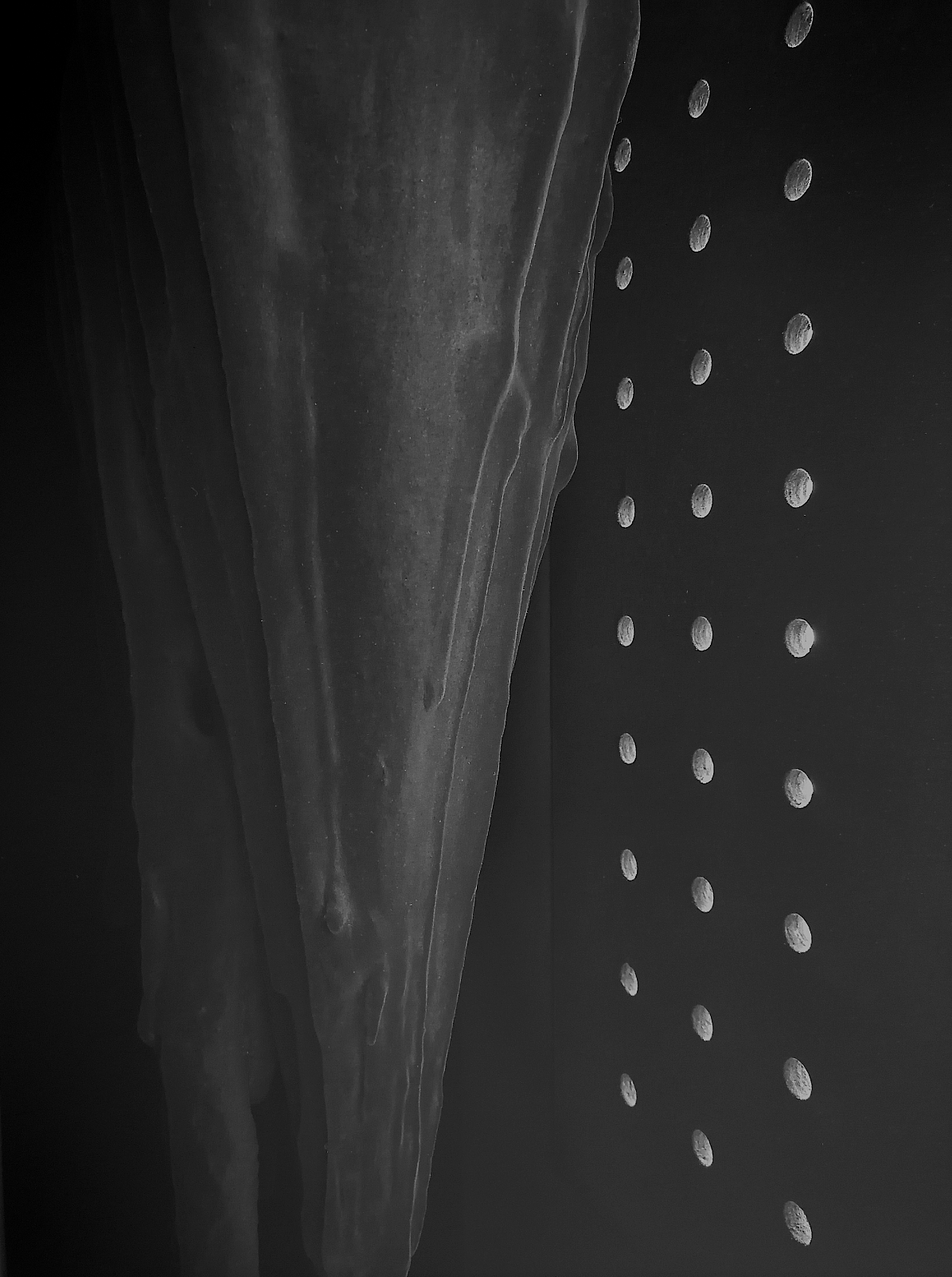
This short interview series traces given lines of thought by artists, marks the trajectories of their practice, and models the physical and ideological space of the contemporary art world across a finite dimension.
What recent exhibition did you see that made a strong impression on you and why?
It was at the Michaelis Gallery in Cape Town as part of the Vital Signs group exhibition. An extraordinary sculptural work by Dominique Edwards and Nicola Deane called Endling.
you have allowed the organisms to put out their tongues
the organisms’ tongues should have been
cut off
at the exit of the body’s tunnels
— Antonin Artaud, The Theatre of Cruelty
Dominique Edwards and Nicola Deane’s sculptural work Endling functions as a mobile, transportable system of necrotic metamorphosis. The genderless form inside an upright coffin on wheels – the interior of which is encased in lush velvety black flock – reads like the molecular code of an almost dead species – alien yet eerily familiar. A fitting metaphor for engagement with decay, mutation and archival preservation.
Opening the doors of the upright coffin reveals a vaginal or tongue-like form whose skin has been overwritten with flock filaments – very short fibres used to form a velvety, protective covering on paper mȃché in patterns mimicking data-pathways or bioinformatic glyphs. But the awful sonic signal that Endling emits as soon as it is approached by the audience – Endling’s “speech” – is irreducible to intelligible units.
Endling, this black flocked tongue-in-the-box extended in a scream, thus embodies a semiotic wound. Speech here is decomposed into a collapse of language implicated as semiosonic decay. The audience encounters not representation, but the sound of language rotting under the weight of its own visibility. The tongue’s sound is no longer language transmission but pure decay-rhythm – a metabolic grammar of putrefaction and feedback. This is the core of Endling’s poetics: to speak where language no longer functions, to sculpt meaning where signifiers decay.
In systems biology, entropy does not merely imply disorder but the loss of informational coherence. This entropy becomes productive in Endling, a necrocybernetic ecosystem where sound, flocked skin, and upright coffin invaginate into one another. In the biomechanical hallucination of Endling, the tongue is not represented but rather re-imagined and assembled: dissected and fed upon by flock filaments and sonic eruption. This is Endling’s corpus: a Kristevan abjection that births alien, virulent syntax through the spasming sonic topology of necrosis.
Endling’s endlessly repeated sonic excretion decomposes in a loop that never closes, a system stuck in pathological autopoiesis. This is the necrotic tissue of sonic sculpture becoming fertile again. Endling’s erotic contortion is not sexual in the human sense, but reproductive in a microbial register – a sonic mating call invoking new morphologies.
Endling repetitively emits this symbol-laden spasm, a semiovocal distortion of neural misfire and semantic collapse. Rejecting legibility and vocal clarity, this repetitive squawk of sound enacts an antiphonic decomposition. Endling’s stuttering sonic loop, then, is both a sign and a scar – a wound where language once operated, a sound unstructured by phoneme, a speaking not in sentences but in fragile shudders.
But the physical form of Endling is not merely fragile – it is porous. The exoskeleton of Endling is perforated not for representation, but for transmission. Each hole functions like a glossophage – a structure for ingesting or emitting spores. In Endling’s autopoietic system, every hole is a semantic aperture akin to Reza Negarestani’s holey spaces where the boundary between inside and outside is not fixed.
Life is not the absence of decay, but its recursive integration – always bordering on its own putrefaction. Endling is alien not because it is unintelligible, but because it resists anthropocentric domestication. Therefore Endling is not therapeutic. It does not console. It purges. Endling offers no catharsis. It is not horror – it is documentation.
In Endling, this documentation is radicalized: coffin, holes, tongue, and the ghost of a language made all the more present by its absence, all become vectors of infection. The tongue mutates. The syntax dehisces. The infected sound byte is no longer a “carrier” of emotion but a lesion in the tissue of sense and/or senselessness. Endling refuses the stability of representation. It is not a metaphor for decay – it is decay materialized as poetics. Artaud would have loved it.

What are you working on right now and where will you present your work next?
I am editing a documentary film for Martin Jansen, a filmmaker based in Cape Town. "WHERE IS THE BETTER LYF U PROMISED US?’’ is a visceral, thought-provoking documentary that delves into the complexities of South Africa's 30-year journey since the end of apartheid. The film examines the promise of "A Better Life for All" that was made by the African National Congress (ANC) in 1994, and the extent to which this promise has been realized. Through interviews with diverse voices from across the country, the film explores the struggles, triumphs, and challenges faced by South Africans in their pursuit of “a better life for all”.
Ultimately, the documentary seeks to shed light on the future of the nation and the potential for progressive change. The failure of politics as we know it is a dominant thread in the film. The soundtrack is by Warrick Swinney, better known as the Kalahari Surfers, the legendary experimental music group active since the early 1980s.
What are the biggest challenges in sustaining your practice?
I have no fucking money. If I had no debt I would be alive.
